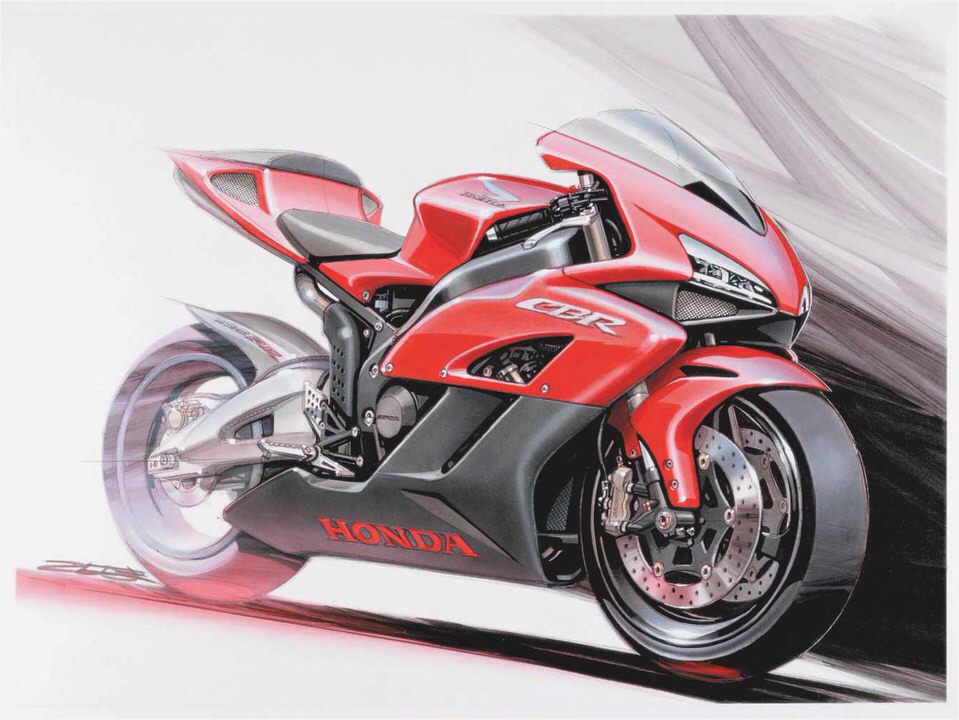
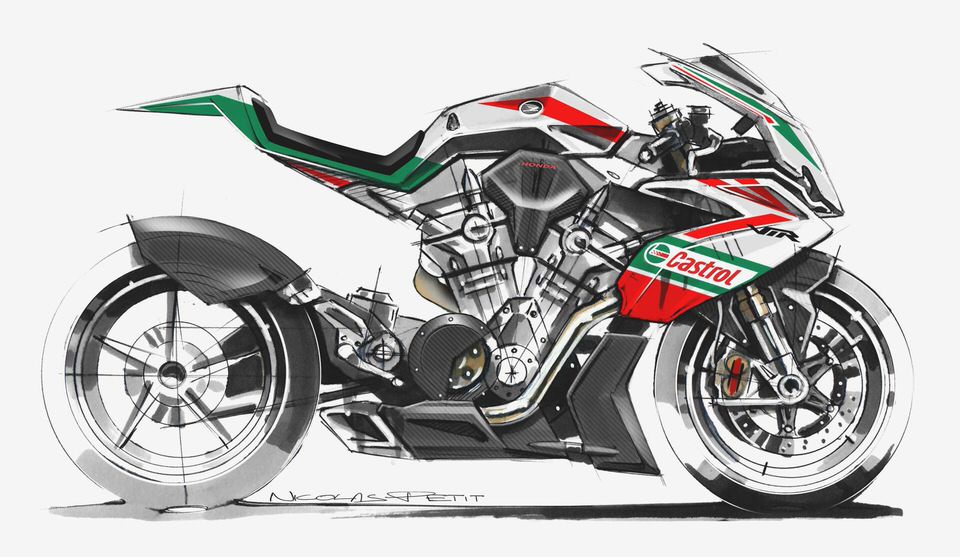
2004 Honda CBR1000RR concept
2005 Honda CBR1000RR final product.
– 2004 Honda CBR1000RR concept
2004 Honda CBR1000RR concept
Honda’s CRB1000RR concept drawings.
CBR1000RR Development
Whole-Cloth Engineering
Torrance, Calif. 02/01/2004 — Consider this: Unlike the majority of new-model motorcycles, the lineage of the 2004 Honda(R) CBR(R)1000RR doesn’t really reach into the past. True, Honda has crafted many other large-displacement transverse inline four-cylinder motorcycles in prior seasons, a rich tradition established in 1969 by the landmark CB750K0.
But the new RR doesn’t follow in the tire prints of those forerunners; it carries over no hardware from past machines.
A quick scan of the CBR1000RR’s features confirms its newness. The compact 998cc in-line four is a completely fresh design, with unique bore and stroke dimensions, race-inspired cassette-type six-speed gearbox, all-new ECU-controlled ram-air system, dual-stage fuel injection, and center-up exhaust featuring a new computer-controlled butterfly valve. The chassis is likewise all new, including an organic-style aluminum frame composed of Gravity Die-Cast main sections and Fine Die-Cast steering head structure, inverted fork, Unit Pro-Link rear suspension, radial-mounted front brakes, and a centrally-located fuel tank hidden under a faux cover.
The roots of the CBR1000RR design stretch across the present and future, tapping wholesale into the cutting-edge technology from within Honda’s world-dominating RC211V MotoGP racing program. For the past two years, the RC211V has stood head and shoulders above all would-be challengers, the uncontested champion in the rarified air of MotoGP racing. And that’s where the heart of the CBR1000RR lies.
One of the main advantages of the RC211V is its ability to put power down early in the corners. While generating upwards of 200 horsepower from modern MotoGP machines is a relatively easy engineering task, managing that power, making the bike ridable and seeing a resultant drop in lap times is another matter altogether. The RC211V’s long wheelbase, coupled with a lengthy swingarm and Unit Pro-Link(R) rear suspension, are credited for much of the bike’s ability to start accelerating earlier than other machines when exiting corners, and it is here the CBR1000RR is most closely aligned to the RC211V’s design philosophy.
Harnessing acceleration and creating a balanced, rider-friendly package in a modern liter bike–especially one destined to be transformed into a racing Superbike with significantly more power than the production model–presented CBR1000RR engineers with much the same challenges as those facing the RC211V’s engineers. And the CBR1000RR team has taken the same engineering approach, a complex puzzle of component placement that begins at the business end of the CBR1000RR.
With the longest swingarm in the literbike class, the CBR1000RR reflects a Honda handling philosophy proven by the RC211V: a longer swingarm acts as a longer lever arm in the rear suspension for superior traction under acceleration and more progressive suspension action. Substantially longer than the corresponding unit on the CBR954RR–585mm compared to 551mm–the CBR1000RR’s 34mm-longer swingarm now makes up 41.6 percent of its total wheelbase. The CBR1000RR’s wheelbase has also increased, taping out at 1405mm (55.3 inches), a 5mm increase over the 954.
Providing room for a longer swingarm required massive changes to the engine architecture, another reason the CBR1000RR power plant shares nothing with the 954. Shortening the engine compared to the 954 meant rejecting the conventional in-line layout. Instead, engineers positioned the CBR1000RR’s crankshaft, main shaft and countershaft in a triangulated configuration, with the countershaft located below the main shaft, dramatically shortening the engine front to back, and moving the swingarm pivot closer to the crankshaft.
Positioning this compact engine farther forward in the chassis also increases front-end weight bias, an effective method of making high-powered liter bikes less wheelie prone under hard acceleration. This approach, however, also provides very little space between the engine and front wheel for a large radiator.
Engineers solved this problem by giving the RR a modest cylinder incline of 28 degrees, and moving the oil filter from its frontal placement on the 954 to the right side of the 1000RR engine. This allows the RR’s center-up exhaust system to tuck closely to the engine, opening the space required for a massive MotoGP-style curved radiator with 40 percent more cooling capacity than the 954’s unit–a key to making big horsepower with high durability.
Look closely at the 1000RR’s engine, and you’ll see that much was designed specifically with an eye toward handling as well as horsepower and torque. Why? Because the power plant represents a large percentage of a motorcycle’s mass, the engine must be configured to assist the handling process, not hinder it.
For decades, Honda has championed the concept of mass centralization, that is, concentrating the component masses as close to the motorcycle’s center as possible. The CBR1000RR elevates that concept to a higher plane.
Renewed Emphasis on Mass Centralization
As a rider initiates a turn and then leans into the turn, the motorcycle rotates around its roll axis, an imaginary horizontal line running fore and aft through the center of mass of the bike and its rider. To create a motorcycle that responds quickly and smoothly to rider input, the major masses need to be placed as close to the bike’s roll axis as possible. As an illustration in the opposite extreme, tightrope walkers are fond of carrying a long, weighted pole specifically because such a device slows down input and motion, which helps them remain stable while walking on that long, thin line.
Honda engine designers paid special attention to making the CBR1000RR power plant an extremely compact package to enhance mass centralization and reduce the roll polar moment, while yielding other benefits as well. Specifically, consider the RR’s bore and stroke. While some engines employ ever-more oversquare dimensions, Honda employed a relatively modest 75mm bore with a 56.5mm stroke to derive a displacement of 998cc.
This choice yields a remarkably narrow engine fit into a commensurately narrower chassis, all the better for increased mass centralization and improved ground clearance as well.
Other measures taken to enhance mass centralization in the CBR1000RR include positioning the starter motor and drive gear on the right side of the engine, which also creates a narrower engine profile for added ground clearance. The 1000RR incorporates a balancer shaft to virtually eliminate secondary engine vibration, and with an eye toward mass centralization it too has been positioned close to the engine’s center of gravity.
Just as they did with the RC211V, Honda engineers looked at the CBR1000RR as an organic whole for centralizing mass. Placing other major masses–fuel and rider–closer to the roll axis results in a motorcycle that reacts more quickly and smoothly to control inputs at the handlebars. Like the RC211V and the CBR600RR, the CBR1000RR fuel tank shares space under a faux tank cover with a forward-mounted air box, thanks to the Unit Pro-Link rear suspension system.
The Unit Pro-Link design provides a wealth of benefits. To begin with, the shock is contained entirely within the swingarm, and the shock is positioned lower than in a conventional design. Both contribute to mass centralization, in part by giving the centrally mounted fuel tank room to extend downward.
Because the shock is contained within the swingarm and does not require a top mount on the frame, the bulk of the 4.8-gallon tank can be positioned down low between the frame rails, close to the centerline of the machine. Two other benefits result from the RR’s fuel placement; the mass of the fuel load has less effect on handling, thereby facilitating quick directional changes; and, because the fuel tank is shorter, the CBR1000RR rider sits closer to the steering head compared to the 954.
To achieve quicker handling, Honda engineers also lightened as many pieces as possible that are far from the center of mass. That gave rise to the RR’s compact Line-Beam headlights, with their high-illumination three-piece reflectors; slim-line LED taillight; single-piston rear brake system that’s lighter than that of the 954; an analog/digital fully electronic instrument panel that’s one of the lightest and slimmest ever mounted on a street bike; plus a host of other changes.
Never before have the sum of the parts of a production street machine added up to such a greater overall whole. Perhaps that’s the greatest legacy the CBR1000RR has inherited from its RC211V MotoGP racing roots.
CBR1000RR Chassis Technology
Torrance, Calif. 02/01/2004 — Look at the CBR(R)1000RR chassis and see Honda’s hard-earned knowledge gained in the ferocious MotoGP wars. This all-new chassis incorporates the engine as an integral frame member, for example, and larger items such as the fuel tank and rider have been positioned carefully to sharpen the machine’s handling response.
These whole-machine concepts, pioneered in the RC211V and subsequently released to the riding public in the form of the 2003 CBR600RR, now incorporate Honda’s latest strides in the CBR1000RR chassis.
Beginning with the styling of the CBR1000RR, which follows the lines set by the RC211V, the family resemblance is unmistakable. A sharp, aggressively angled nose transitions to a sleek, low-profile windscreen–all the better for track-going aerodynamics. The fairing’s side body panels are of three-piece design for easier access to engine and chassis components–plus more of the aggressive look. And the distinctive fuel tank?
It’s actually a fuel tank cover for the underlying airbox and deep-reaching fuel tank. Experienced eyes will detect its shorter length, which allows the pilot to move forward. Again, this is part and parcel of the CBR1000RR’s RC211V genetic lineage; a compact configuration brings the rider closer to the machine’s center of mass to enhance quick steering transitions and neutral handling.
With handlebars set 1.8 inches lower and footpegs set higher and farther back than those on the CBR954RR, the 1000RR shows off more of its track heritage, yet there is still room for street-going niceties such as a detachable pillion seat that can be replaced with an optional color-matched cowl according to the hauling duties of the day. Underneath the rear seat area, there’s storage room for a small U-lock, gloves and other essentials.
Of course, the big RR takes full advantage of Honda’s MotoGP-derived Unit Pro-Link(R) single-shock rear suspension design. In the Unit Pro-Link layout, the top of the shock mounts to the top of the massive, heavily braced aluminum swingarm rather than to a rear frame crossmember mounted up high. When the rear wheel travels through its arc, the linkage system compresses the shock from below.
As a result, the frame remains isolated from rear suspension loads, and the central frame can now be configured for other uses, specifically, housing a major portion of the fuel load down low, in a position close to the bike’s center of mass for better, more consistent handling.
Although this newest Unit Pro-Link setup follows the overall design first seen in the RC211V and later applied to the CBR600RR, the CBR1000RR’s specific hardware is unique to this model alone. The swingarm and damper differ significantly in appearance with a new rear-facing shock reservoir that not only lends a striking appearance but also provides unfettered access to damping adjusters. As would be expected of a premium sport machine, the CBR1000RR shock offers adjustable spring preload plus rebound and compression damping adjustability, and there’s a full 5.3 inches of rear wheel travel.
Aluminum Frame Construction
The CBR1000RR’s aluminum frame and swingarm both tap into a variety of manufacturing techniques to accommodate the fine-tuning of specific components for strength, rigidity, shape, size and weight prior to final assembly. The steering head, for example, utilizes Honda’s innovative Fine Die-Cast technology to create a structure that’s strong yet features thin-wall construction for light weight.
From there, large gravity die-cast sections extend down and around the engine, while other plates reach up and forward from the swingarm pivot. The solid-mount engine hangers are also gravity die-cast pieces. The short but large main aluminum spars wrap around the cylinder head in RC211V fashion, and these aluminum extrusions have been specially shaped so the upper side is narrower than the bottom, in part to create more clearance space for the handlebars and cylinder head.
The long hybrid aluminum swingarm, in turn, incorporates a cast center portion, while the left side uses extruded members and the right side features press-forged components to form the optimum balance in rigidity, shape and weight. Compared to the swingarm used in the 954, this new unit delivers an increase in torsional rigidity, while lateral rigidity was reduced to help the chassis settle into corners more easily.
The center-up exhaust system is carefully ensconced within the lightweight die-cast aluminum subframe. The net result is an artful rendering of lightweight yet strong and rigid frame members carefully joined to yield responsive handling with exemplary feel and feedback.
The front suspension on the CBR1000RR features Honda’s latest 43mm inverted HMAS cartridge fork, a stout, track-ready setup with spring preload, rebound and compression damping adjustability and 4.7 inches of travel on tap, up from the CBR954RR fork, which provided 4.3 inches. The new machine’s steering angle of 23.45 degrees matches that of the 954, but fork offset was reduced from 30mm to 25mm, and as a result the new bike’s trail length of 102mm shows an increase of 5mm. Wheel and tire sizes front and rear remain state-of-the-art in sport bike circles; the super-light aluminum-alloy hollow-spoke front wheel measures 3.5 x 17 inches, while the rear is a 6.0 x 17 unit.
The 1000RR front end sports a set of new four-piston Tokico radial-mounted brake calipers. Because these race-style units bolt onto distinctive turret-type mounts, the calipers can better resist shear forces generated under braking for less deflection and a stronger, more rigid setup. This new configuration also creates space for a centrally-located tightening bolt to help hold the two halves of the caliper together, and this new three-bolt design produces a more rigid caliper for improved stopping power, even pressure distribution and exemplary feel through the brake lever.
The brake pistons also undergo a special two-stage plating regimen with electroless nickel and chrome plating to ensure smooth operation and superior corrosion resistance for added longevity. With such superior performance on tap, the floating brake rotors could be downsized from the 330mm-diameter units used on the 954 to 310mm rotors–a change that also nets a savings in unsprung weight. In addition, a new single-piston rear brake caliper delivers excellent power while also providing a weight savings.
Along with these new radial-mounted calipers, the front brake system also features a newly developed vertical-piston master cylinder. First used on Honda’s factory Superbikes, this system produces a superior leverage ratio at the front brake lever for higher braking efficiency with excellent feel and controllability. This layout permits the use of a longer brake lever, which means more braking force with less effort from the rider.
Like the CBR600RR, the 1000RR boasts Honda’s new, low-profile Line Beam headlights with their compact yet high-illumination three-piece reflectors, and lenses only half the size of conventional systems. Brilliant illumination in a lightweight, downsized package–that’s more of Honda’s holistic engineering at work.
Likewise, the 1000RR’s compact and lightweight new instrument panel takes its cues from the RC211V’s vaunted space-efficiency, with LCD readouts positioned around a large tachometer dial. The surrounding LCDs include a large-readout digital speedometer, odometer and dual trip meters, digital coolant temperature gauge and a clock.
Besides the usual selection of indicator lights, the instrument panel also features a new racing-inspired adjustable shifting indicator light, which can be set anywhere between 5000 and 11,600 rpm for an instantly recognizable indication of optimal shift points. This indicator can also be set for one of three settings–on, slow- or fast-flashing modes.
From the front brake lever to the frame to the swingarm and everywhere in between, the CBR1000RR chassis clearly reveals its racing heritage through and through. The DNA of the mighty RC211V can be traced in virtually every component within Honda’s newest Superbike, a legacy that is certain to benefit all who ride the 1000RR, be it on the track or on the street.
CBR1000RR Engine Technology
Tracing the Road to World-Class Power
Torrance, Calif. 02/01/2004 — The CBR(R)1000RR boasts a truly world-class powerplant, an all-new liquid-cooled 998cc inline four-cylinder engine carefully designed to also enhance handling. Begin by comparing the overall silhouette of the new 1000 and the CBR954RR, and immediately you can see there’s no comparison; the CBR1000RR boasts significantly smaller, more compact dimensions.
There are blatantly obvious changes, such as relocating the oil filter away from the front of the engine to save space. And high-tech tricks such as designing a new, slimmer and lighter ACG with neodymium magnets to help keep case width especially narrow. But Honda’s commitment to mass centralization in this new-generation Superbike permeates through and through every cubic centimeter of the engine.
For example, at the very heart of the CBR1000RR, we find a compact 75mm bore size contributing significantly to the engine’s narrow proportions. Engine stroke measures 56.5mm–a combination also selected specifically for its ability to generate loads of torque along with plenty of top-end horsepower.

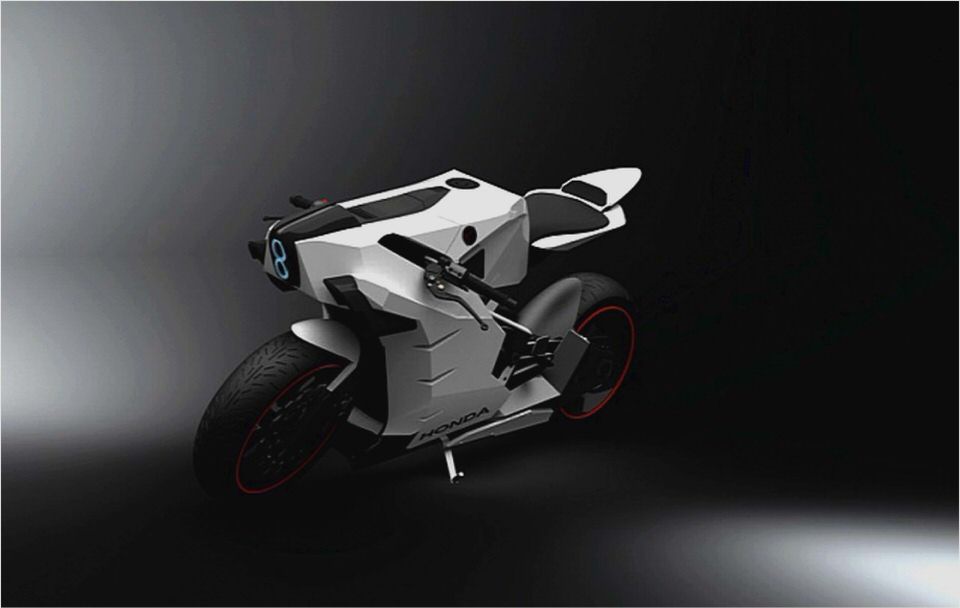
Making it Light
Strong and durable forged aluminum slipper pistons coupled to nutless connecting rods feature less reciprocating mass to produce a quicker-revving engine. In addition, the piston skirts have been impregnated with molybdenum to create a friction-reducing surface, an innovative treatment both tougher and longer lasting than the LUB coating Honda(R) used previously. More than a surface coating, this process literally shoots particles of pure, low-friction molybdenum into the skirts of the piston with such high force and temperature they become embedded into the surface of the aluminum with a chemical reaction that bonds the material together.
These pistons run through aluminum composite cylinder sleeves high-pressure formed from sintered aluminum powder impregnated with ceramic and graphite for improved wear resistance and superior heat dissipation. And for the first time in a street bike engine design, the CBR1000RR cylinder block incorporates a semi-closed deck that positively secures the tops of the cylinder bores to the outer walls of the block with cast-in bridges for increased rigidity and consistency in cylinder bore shape under all conditions.
To further reduce reciprocating mass, the CBR1000RR features nutless connecting rods with end caps held in place by bolts that thread directly into tapped holes in the rods. This design shaves approximately 50 grams out of these critical engine components to reduce mechanical loads and also improve engine response and acceleration.
The DOHC cylinder head employs four valves per cylinder, 29mm intake and 24mm exhaust. These valve head diameters match those from the 954, but the stems of the new valves have been slimmed from 4.5mm to 4.0mm for lighter weight and reduced friction. This weight reduction also allows the use of lighter valve springs, for quick and precise valve actuation.
Compared to the 954, included valve angles are slightly flatter (23.5 degrees vs. 25.0) to open up the combustion chamber for more efficient burning, and intake ports were raised to create a straighter path for the incoming fuel charge. The CBR1000RR features shim-under-bucket valve adjustment for high-rpm durability; engine redline is set at 11,650 rpm.
To keep the engine spinning smoothly even at such elevated speeds, the RR features a light but efficient balancer shaft mounted close to the crankshaft to maximize mass centralization.
Programmed Dual Stage Fuel Injection
To feed this big engine, Honda engineers lifted another page from the RC211V formula and installed Programmed Dual Stage Fuel Injection (PGM-DSFI). As its name implies, DSFI employs a pair of injectors for each cylinder.
This dual-injector system eliminates a significant compromise inherent in older single-injector setups. In the past, if low-end engine response was desired, the fuel injectors were mounted close to the intake ports. On the other hand, if maximum power was desired, the injectors had to be mounted father away from the intakes–a direct conflict with the practice of positioning the injectors for best response.
Honda’s engineers resolved the compromise by employing dual injectors to meet both objectives.
First, a set of all-new Denso injectors has been mounted in the venturis of the large 44mm machined aluminum throttle bodies. An entirely new manufacturing process endows these fourth-generation injectors with a radial array of 12 holes that produce a wider, more diffused output. As a result, this more finely atomized spray covers a wider area and mixes 20 percent more efficiently with the intake air, which results in more efficient combustion.
In addition, new, dramatically lighter needle bearings allow the injectors to respond to electric signals 30 percent faster than the previous generation–an amazingly short response time of 1/1000th second. In addition, these new-generation injector bodies also weigh 25 percent less than the previous units.
To ensure a constant flow of fuel at higher engine speeds to produce maximum power, the second set of 12-hole injectors rests in the top of the air box, directly above the velocity stacks of each throttle body. This second bank of injectors come into play at engine speeds of 5500 rpm and higher.
As these showerhead-style injectors spray a finely atomized fuel charge into the intake areas, this blast cools the air/fuel mixture, thereby creating a denser charge that produces more power. Together, these dual injectors solve the classic injector dilemma, delivering stellar throttle response while also pumping out exemplary top-end power.
A sophisticated 32-bit Electronic Control Unit with dual 3-D injection maps for each cylinder manages the fuel injection system, and also handles the ignition and emissions systems. In addition, the ECU incorporates the control systems for the ram-air intake system, exhaust valve and the CBR1000RR’s innovative electrohydraulic steering damper. Amazingly enough, for all of its high-powered processing capability, this new-generation ECU is small enough to fit in the palm of your hand.
Cold air intake for the CBR1000RR is controlled by a two-stage system, which includes the main ram-air duct located below the bottom triple clamp and above the new large-capacity radiator, plus a smaller dual-intake sub-duct system. At low engine speeds, air flows into the sub-duct system through two doors, one located on each side of the larger intake tract.
At higher engine speeds, a vacuum-operated system closes the doors to the sub-duct system while simultaneously opening a door to the main ram-air duct, thereby creating a high-pressure flow of cold, dense air for a dramatic increase in midrange and high-speed power. New high-flow cylindrical air filter elements reside within the 8.35-liter air box, which is hidden away under the front portion of the faux fuel tank cover.
Exhaust Tuning Made Simple and Light
On the exhaust side of the engine, a brand-new servo-controlled system actuates a next-generation valve located within the four-into-two-into-one steel and titanium center-up exhaust system. This cable-actuated stainless steel butterfly valve resides just downstream of the collector and is operated by a servomotor that receives control signals from the central ECU. As a bonus, this new system is a whopping 770 grams lighter than the system used in the CBR954RR.
By tuning exhaust pulses and back-pressure at specific engine speeds, this system significantly improves power output and engine response at all engine speeds without the added noise. As this tunable exhaust system works in conjunction with the Dual Stage Fuel Injection system–with air flow managed by a new ram-air setup–the CBR1000RR power plant has become a model of engine tuning flexibility. As a result, this world-class machine does it all: it churns out massive amounts of low-end torque, packs a wallop in the midrange, and then caps it all off with genuine Superbike-class top-end power.
Cassette Gearbox
Another industry-leading feature gracing the CBR1000RR takes its roots squarely from the racetrack: a cassette-type close-ratio six-speed transmission. Thanks to the easy access afforded by a cassette gearbox, the 1000RR will definitely deliver an advantage to racers who need to match gearing to different racetracks and under varying conditions.
To gain access to the gearbox you simply remove the right side crankcase cover, and the clutch assembly, shift forks and drum can be removed as an entire assembly. To cope with its additional power, the clutch diameter now measures 140mm, up from 125mm in the 954, and clutch actuation now occurs through a hydraulic system.
With an eye fixed firmly on the racetrack, Honda’s engineers designed a radiator for the CBR1000RR that dwarfs the unit affixed to the 954, boasting 211 square inches compared to 127 square inches. This increased size raises cooling capacity 41.5 percent, from 26kW to 36.8kW, and the fan size has also grown from 171mm in diameter to 191mm. Whether you find yourself on the starting line at your local racetrack or stuck in stop-and-go city traffic, you’ll be sure to appreciate this extra cooling capacity.
How was it possible to incorporate such a large radiator? Again, it was part of a holistic design from the very beginning. Setting the cylinder block in a relatively upright position creates more room up front, and that space was enhanced by repositioning the oil filter from its familiar up-front position to a spot on the right side of the engine–a design elegant in its simplicity.
Another example of racetrack-oriented engineering can be found in the lightweight magnesium oil pan. By employing special high-temperature magnesium in place of aluminum, Honda’s engineers could save a full 375 grams. This special material also provides better structural resistance to deformation at extremely high temperatures, for more reliable sealing.
As an added weight-saving measure, the 1000RR’s head cover is also made of magnesium.
By completely rethinking the architecture of the venerable inline four, Honda engineers have created an engine that gives a nod to the past and accelerates hard into the future, bringing world-class liter bike performance and race-proven technology to the production line in 2004.
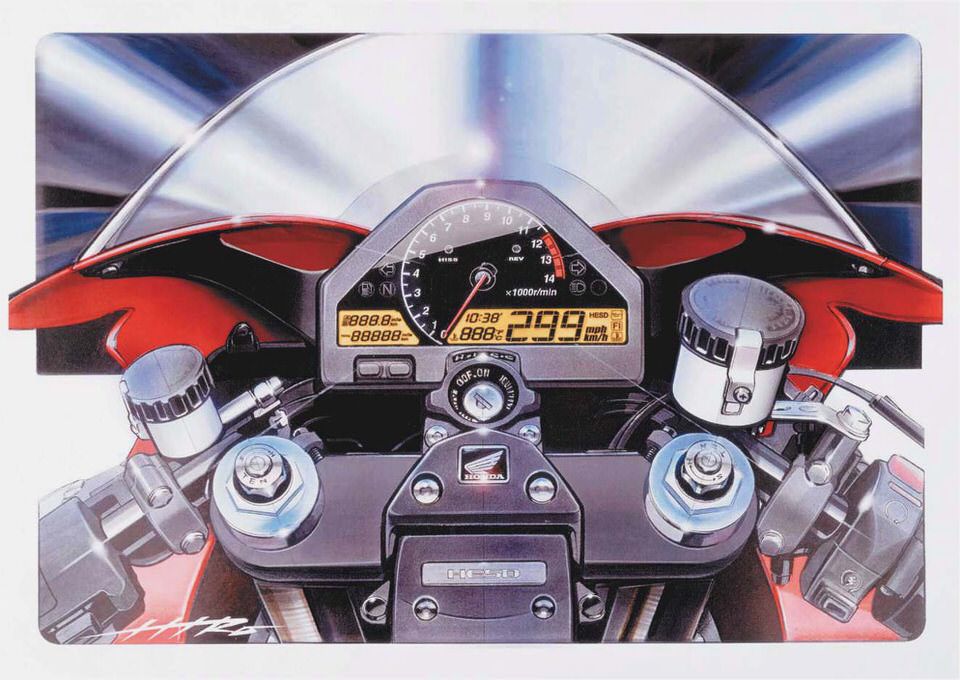
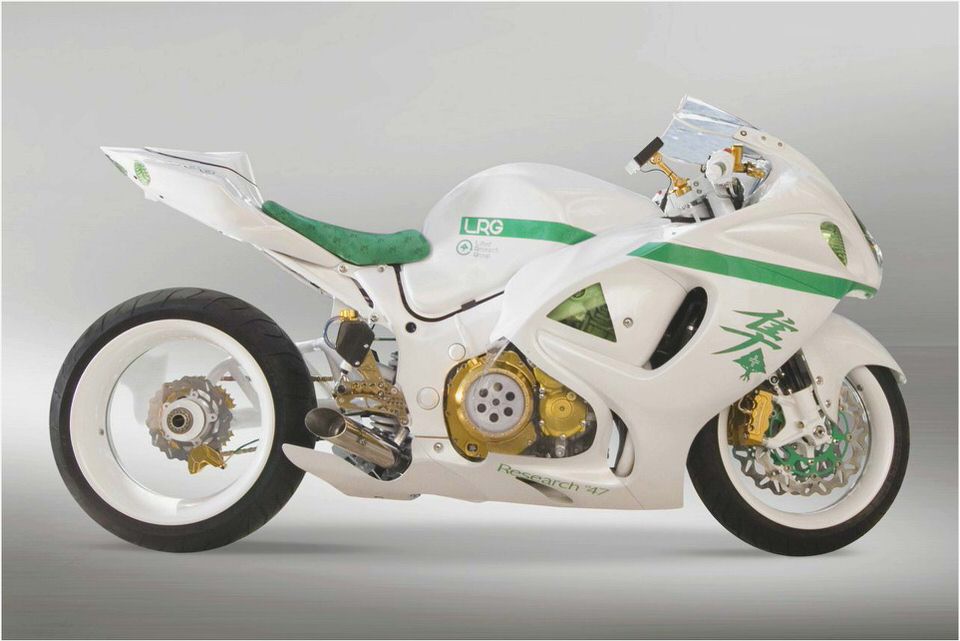

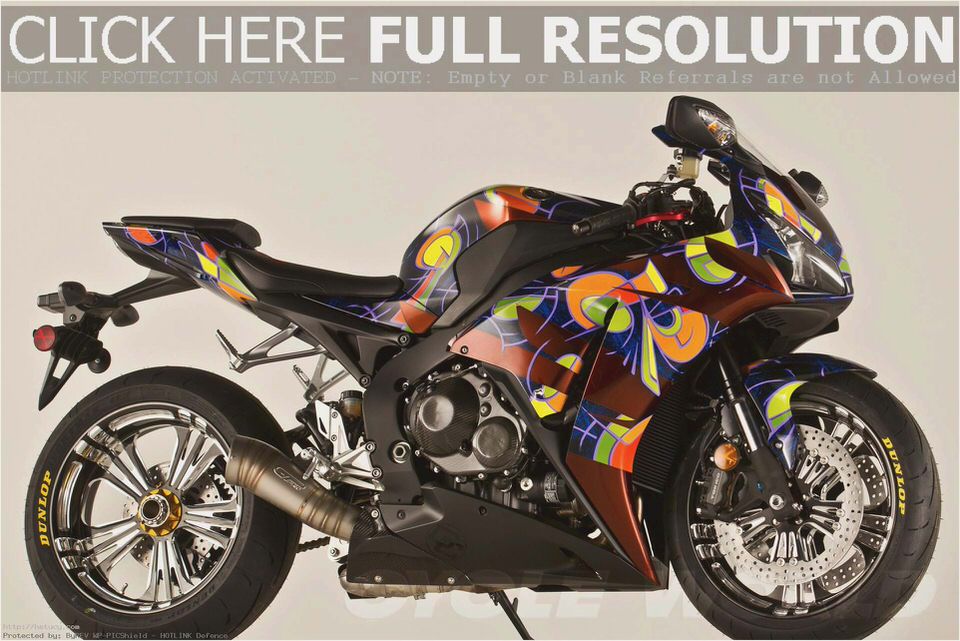

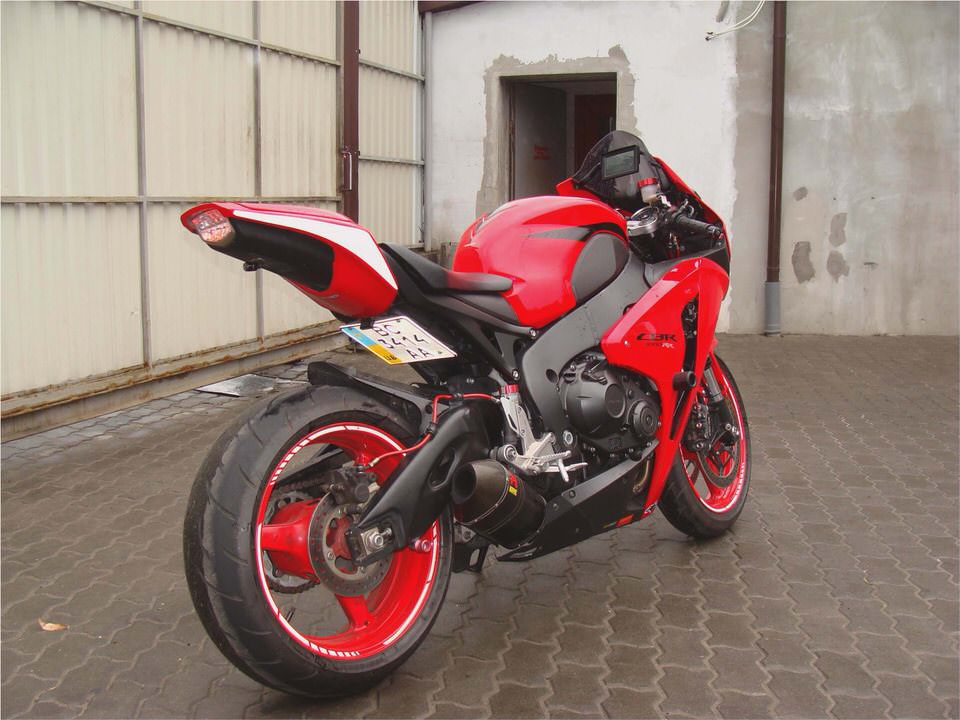
- Honda Trx450r Owners Guide Books
- Honda Leasing EV-neo Electric Scooter – Motorcycle USA
- Hero Honda Achiever in India, Hero Honda Achiever Review, Hero Honda Achiever…
- 2004 Honda TRX450R Review – 4WDirt
- Information on a Honda 1800 eHow

